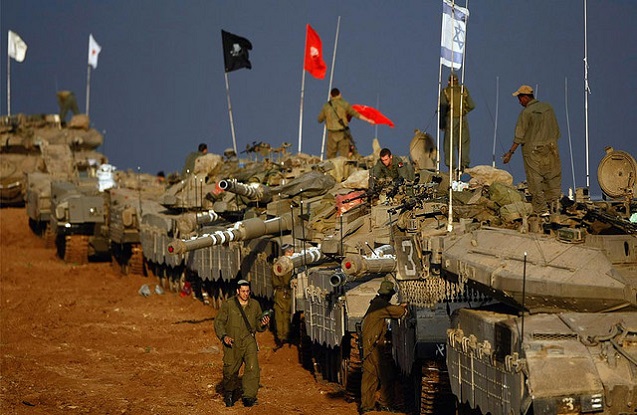
Part of the Series
Gaza on Fire
When I looked in my fishing tackle box this afternoon, I saw hooks and lines all tangled together. It was a mess. Try as I might, I couldn’t get to the knot that held the tangle in its grip. My failed effort made me think of the Israel-Palestine knot and how the parties and the United States have been unable (or unwilling) to break it.
Of course the tangle tends to shift with each new development in the Middle East. Right now the major strands are: a tenuous ceasefire in Gaza, international efforts to rebuild Gaza, the occupation and Israeli settlement expansion, the PLO-Hamas reconciliation and new European initiatives to recognize Palestine as a state.
- Gaza Ceasefire. Last July’s 50-day war ended, but few observers believe the cease-fire will last. Operation Cast Lead of 2008-09 and earlier Israeli attacks on Gaza established a pattern of what Israel has termed “mowing the lawn.” Unless the knot at the base of the tangle is pulled loose, it is only a matter of time until Gaza again faces death and destruction from the Israeli military.
- Gaza Reconstruction. The October 12 international donors conference in Cairo secured $5.4 billion in pledges (including $212 million from the United States). Only half of the total allocation was earmarked for rebuilding the Gaza Strip, while the destination of the other half was unspecified. Donors are understandably hesitant to rush the building of new structures when a near-term next war is certain to bring them down again. A more immediate constraint is the severe limit the Israelis have placed on the import of construction materials. Meanwhile, ordinary Gazans suffer from inadequate shelter and basic infrastructure.
- The Occupation and Israeli Settlement Expansion. The occupation continues in both the West Bank and Gaza, while the Gaza Strip remains effectively blockaded by land, air and sea. More than its checkpoint inconveniences, the occupation dehumanizes Palestinians, while the expansion of Israeli settlements makes the possibility of a viable Palestinian state hopeless. Egypt’s closure of the Rafah crossing has helped Israel maintain Gaza as an open-air prison.
- PLO-Hamas Reconciliation. Hamas has already stepped down from its administration of Gaza, allowing the PLO to reenter the strip as the official government. Israel has opposed the reconciliation it considers tainted by a “terrorist organization.” It is too early to know whether the reconciliation itself will hold and whether the PLO will be able to stop a resumption of militant attacks on Israel.
- European Country Recognition of Palestine. The new government in Sweden has promised to recognize Palestine as a state in the near future, while the UK parliament has just voted a nonbinding resolution to do the same. Europeans are incensed by Israel’s disproportionate use of force and the indiscriminate killing of civilians (especially children) in its bombings of Gaza. We can expect more recognition actions and more support for the Boycott, Divest, Sanction (BDS) movement.
So what knots lie at the center of the current stalemate? The three most important ones are the occupation, Israeli settlement expansion and the blockade of Gaza. Until those entanglements are effectively addressed, there can be no lasting peace for Israel and Palestine. It’s as simple as that.
Indeed, a continuing status quo will likely breed renewed militant activity against Israel, and an excuse for the IDF to once again “mow the lawn” in Gaza. It would discourage any serious Gaza reconstruction, and it would generate anti-Israel feelings (and anti-Semitism) as it fuels an expanding BDS movement. A continuing lack of progress toward peace could also erode the still fragile reconciliation between Hamas and the PLO, boosting Hamas in both Gaza and the West Bank.
What can the United States do to untangle the knots? More action; less talk. It’s not enough for US diplomats to express “concern” when Israel expands settlements or bombs civilians. By its bloated military aid (currently more than $3 billion a year), America enables the Israeli oppression of Palestinians. That aid could be a powerful bargaining chip for peace.
Only a threatened embargo of US military assistance to Israel is likely to persuade Prime Minister Netanyahu to stop settlement building, open the Gaza border crossings and begin a good faith negotiation to end the occupation. Similarly, the withholding of military aid to Egypt is what it would likely take to persuade President El Sissi to reopen the Rafah crossing.
If the diplomatic knots remain untied, the US should reallocate the billions of its Israel and Egypt military aid to the reconstruction of Gaza.
Thank you for reading Truthout. Before you leave, we must appeal for your support.
Truthout is unlike most news publications; we’re nonprofit, independent, and free of corporate funding. Because of this, we can publish the boldly honest journalism you see from us – stories about and by grassroots activists, reports from the frontlines of social movements, and unapologetic critiques of the systemic forces that shape all of our lives.
Monied interests prevent other publications from confronting the worst injustices in our world. But Truthout remains a haven for transformative journalism in pursuit of justice.
We simply cannot do this without support from our readers. At this time, we’re appealing to add 50 monthly donors in the next 2 days. If you can, please make a tax-deductible one-time or monthly gift today.